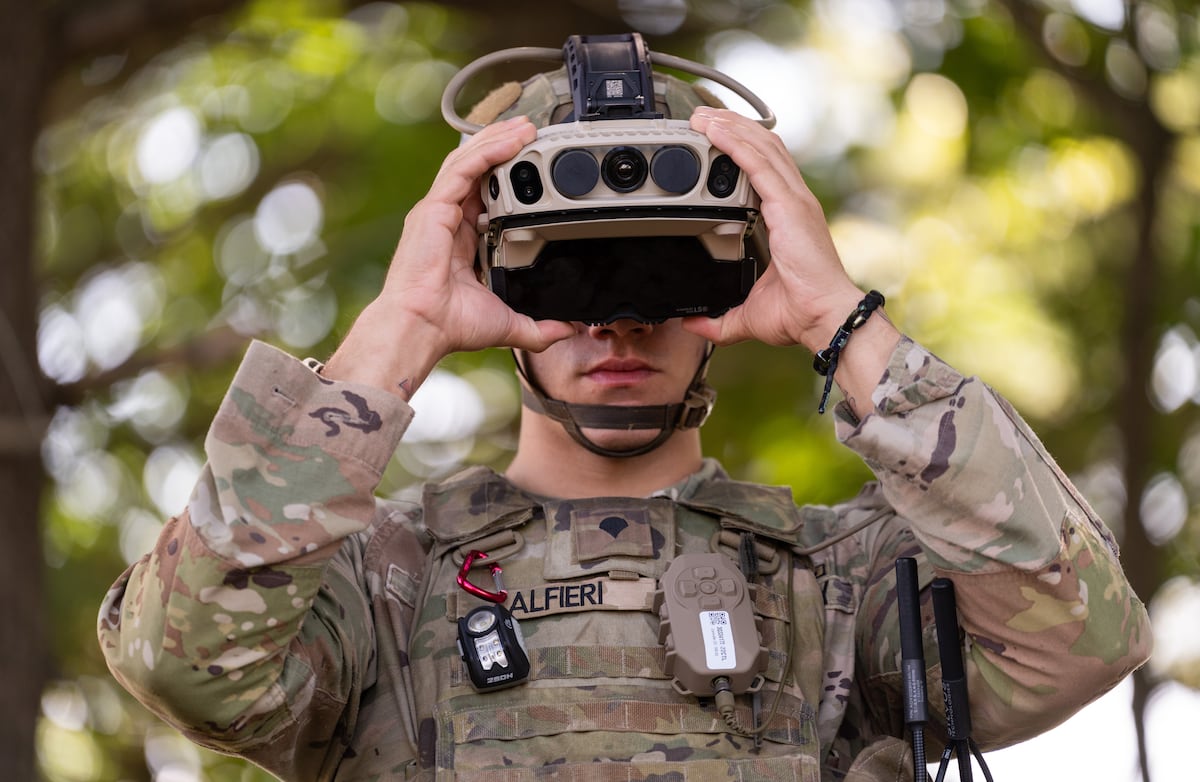The U.S. Army’s Program Executive Office-Soldier (PEO-Soldier) is enhancing soldier gear with new technologies and equipment set for deployment in 2025 and beyond. Recent developments include lighter body armor, advanced medical devices, and innovative cold weather gear, aiming to improve soldier safety and operational effectiveness.
Advancements in Soldier Technology
The PEO-Soldier recently showcased its latest equipment at a meeting with Army Times prior to the Association of the U.S. Army Annual Meeting & Exposition. Among the highlights is the Integrated Visual Augmentation System, now rebranded as the Soldier Borne Mission Command. This high-tech heads-up display will soon be available in a glasses format, significantly reducing bulk compared to previous goggle designs. In September, Rivet secured a $195 million agreement to advance the project, described as the Army’s next-generation platform for situational awareness among dismounted units.
Additionally, Anduril announced a $159 million contract for developing a night vision and mixed reality system as part of this initiative. Both companies are expected to deliver 70 systems each by March for further evaluation, with plans to integrate new architecture and hardware by the fourth quarter of fiscal 2027, according to Lt. Col. Mark May.
Innovative Munitions and Enhanced Protection
PEO-Soldier is also focusing on loitering munitions, introducing the Purpose Built Attritable Systems, which includes several quadcopters capable of one-way attacks or delivering munitions. Lt. Col. Will Taylor described the system as more than a typical drone, stating, “It’s a munition.” On a larger scale, the Switchblade 600 loitering munition, equipped with a Javelin warhead, is designed to destroy armored targets. Weighing approximately 75 pounds and measuring five feet in length, this system has already seen deployment, with 138 devices fielded across 12 units and an additional 1,600 on order.
In terms of personal protection, the new Lightweight Small Arms Protective Inserts (LSAPI) supply the same ballistic protection as the Enhanced Small Arms Protective Inserts (ESAPI) but are 1.5 pounds lighter. The Army recently awarded $65.5 million in contracts to Hardwire LLC and Leading Technology Composites, Inc. for the production of 72,179 LSAPI plates. This marks a significant advancement in soldier safety without compromising mobility.
Soldiers will also benefit from improved helmet pads for better comfort and fit, along with an updated rail system allowing for easier attachment of tactical communication devices and hearing protection.
Cold Weather Gear and Medical Innovations
As winter approaches, PEO-Soldier is testing new tactical clothing, snowshoes, skis, and other cold weather gear, aiming for potential deployment by fiscal 2028, as stated by Lt. Col. Austin Banford. Soldiers from the 3rd Brigade of the 25th Infantry Division and the 3rd Brigade of the 82nd Airborne Division are currently evaluating a poncho designed to protect against electromagnetic detection.
In the realm of medical care, PEO-Soldier is introducing advanced medical devices including the Sparrow ventilator, which automates respiration support, freeing medics for other tasks. Blood coolers and freezers have also been provided at the tactical level, allowing medics to create ice packs for blood delivery in the field. Additional innovations include a blast overpressure monitoring system to track exposure levels for soldiers and a medical trauma sensor capable of measuring critical health data such as blood oxygen saturation and pulse.
These advancements reflect the Army’s commitment to equipping soldiers with the best possible tools to ensure their safety and effectiveness in a variety of operational environments. As these technologies continue to evolve, the future of soldier gear promises to enhance both individual protection and mission success on the battlefield.






































































